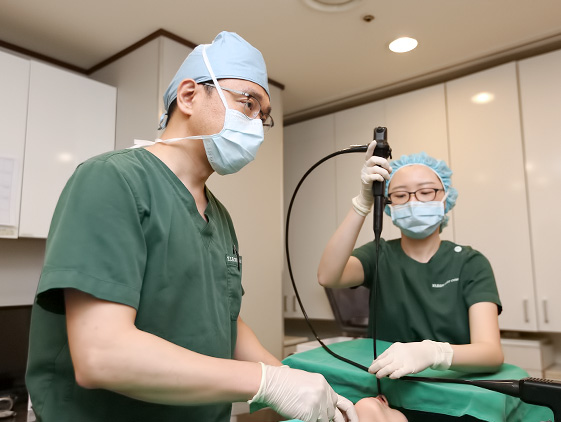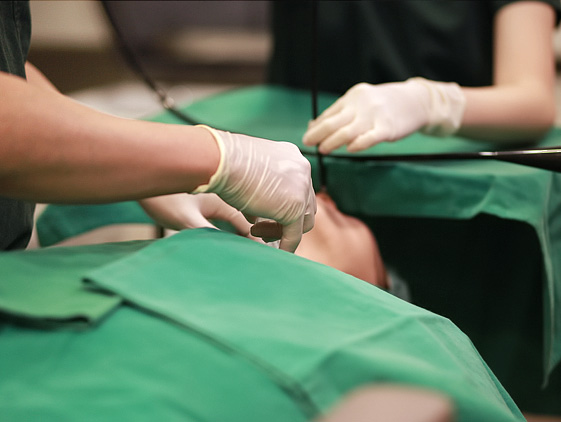What is vocal folds paralysis?
The vocal folds of the larynx which is a major source of sound in speech, is controlled by the vagus nerve, the 10th of the 12 cranial nerves. By the recurrent laryngeal nerve and the superior laryngeal nerve inside the vagus nerve, the muscles inside the larynx and the vocal folds move together naturally to cause sounds and breathing, and to prevent food from going down through the trachea.
The vocal folds are brought together by the action of laryngeal nerves, so that air pressure builds up beneath the larynx, generating sound through the rhythmic opening and closing of the vocal folds. However, when the nerves are paralyzed, the vocal folds do not open or close properly and remain open, leaving the airway passage and the lungs unprotected. It causes hoarseness and coughing because the food goes down and gets stuck in the trachea.
It is very important to know that laryngeal nerve paralysis is not the only cause for abnormal movement of the vocal fold. There may be other reasons such as: a tumor inside the larynx, arytenoids dislocation from trauma, damage to the joints, congenital malformation, Inflammation, infection of the larynx and scarred vocal fold. Therefore, it is important to find out the exact reason why this has occurred.
Among the laryngeal nerves related to vocal folds movement, the recurrent laryngeal nerve moves out of the brain along the carotid artery in the neck at the same time along the subclavian artery on the right then it comes back to the larynx again. As this recurrent laryngeal nerve has the long circulation, it can cause damage to the nerve if a body system has any problem.
Examinations for vocal folds paralysis
Vocal fold paralysis can be caused by many reasons. It is important to examine how far it has developed,
whether it can recover, and the time of recovery. Therefore, different evaluations must be performed according to the cause.
Brain computed tomography, and brain MRI is performed when necessary, to examine brain disorder brain tumor,
a disorder in the central nervous system and the peripheral nervous system.
To identify neck tumors or disorders in the blood vessels or nerves, cervical computed tomography is necessary,
and sometimes thyroid functional test and ultrasonography might be necessary.
Laryngoscopy and laryngeal stroboscopy are performed to identify inborn disorders,
inflammatory diseases and functional disorders.
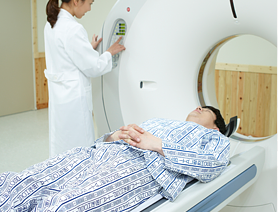 CT Test
CT Test
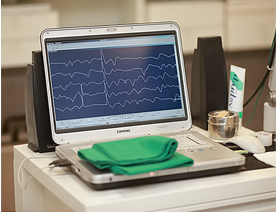 Laryngeal Electromyography
Laryngeal Electromyography
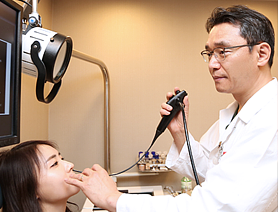 Firberlaryngoscopy
Firberlaryngoscopy
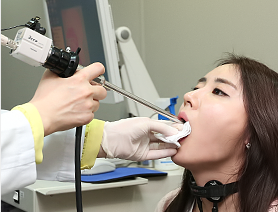 Stroboscopy
Stroboscopy
Vocal Folds
The treatment of unilateral vocal fold paralysis started a long time ago. In 1911, Dr. Wilhelm Brunings first started the treatment for paralyzed vocal folds by injecting paraffin to the paralyzed vocal fold muscle. The method was used mainly to treat vocal fold paralysis until the 1970’s, but it is no longer in use due to its side effect of forming granuloma.
Later in 1915, Dr. Erwin Payr first developed the method of operating the thyroid cartilage which was a laryngeal structure. From then on, there was no systematic theory until 1950, and not many operations were performed. After Dr. Isshiki systematically established the operation of the laryngeal structure in 1974, thyroplasty became common.
Another laryngeal structure operation is the arytenoids adduction, first performed to 12 patients by Dr. Slavit and Dr. Maragos in 1992. Recently the method of using thyroplasty and arytenoid adduction simultaneously is being attempted.
In 1977, the method of partially cutting off the omohyoid muscle which is connected to the hypoglossal nerve branch and implanting it to the vocal fold muscle (thyroarytenoid muscle) was newly attempted by Dr. Tucker.
Namely, it was the method of replacing a paralyzed nerve in the vocal fold with another nerve. However, it is not used commonly because it requires too much time for the vocal fold to recover its function. Later in 1984, Dr. Ford first attempted the method of injecting collagen into the vocal fold, and in 1991 Dr. Mikaelian introduced the method of using fat transplantation.
The latest operation method in use is the Percutaneous EMG-guided Injection Laryngoplasty developed and presented at national and international conferences by Dr. Hyung-tae Kim in 1997, adjunct professor at Catholic University of Korea College of Medicine and current director of Yeson Voice Center. This method involves the injection of artecoll to the vocal cord ligament layer using the electromyogram.
